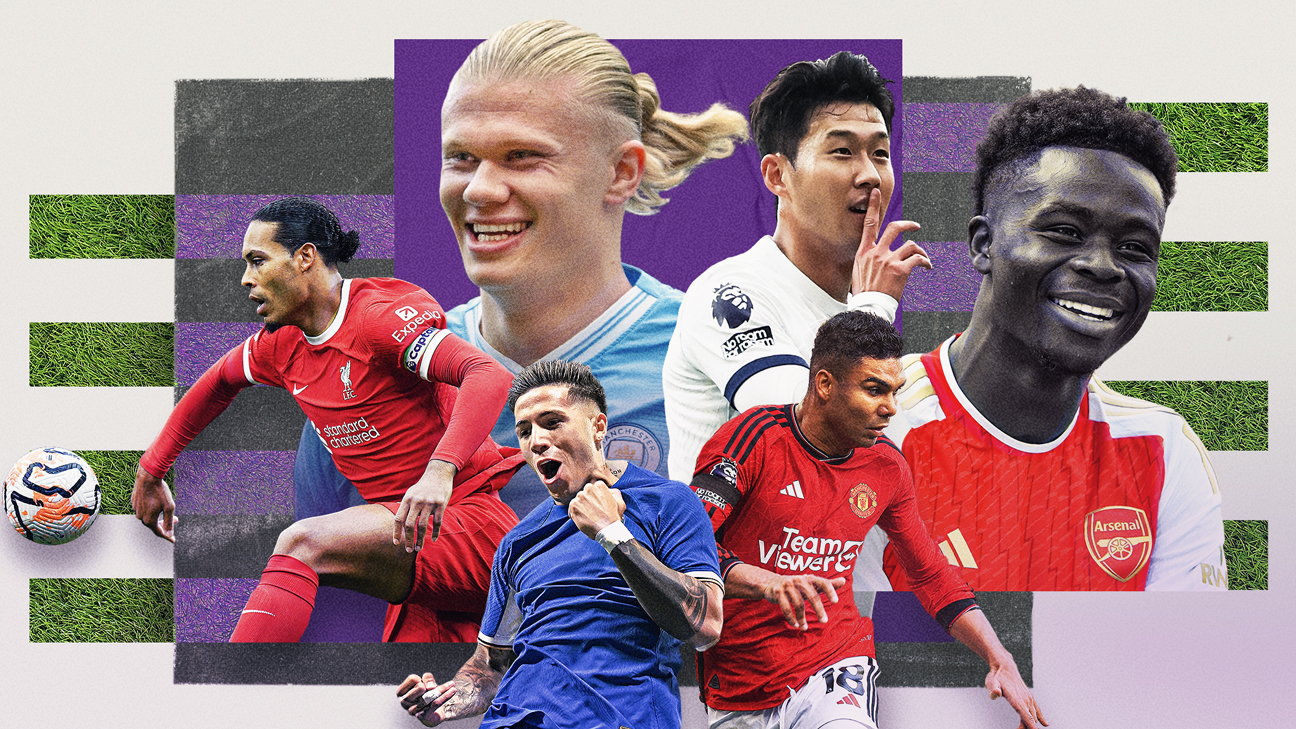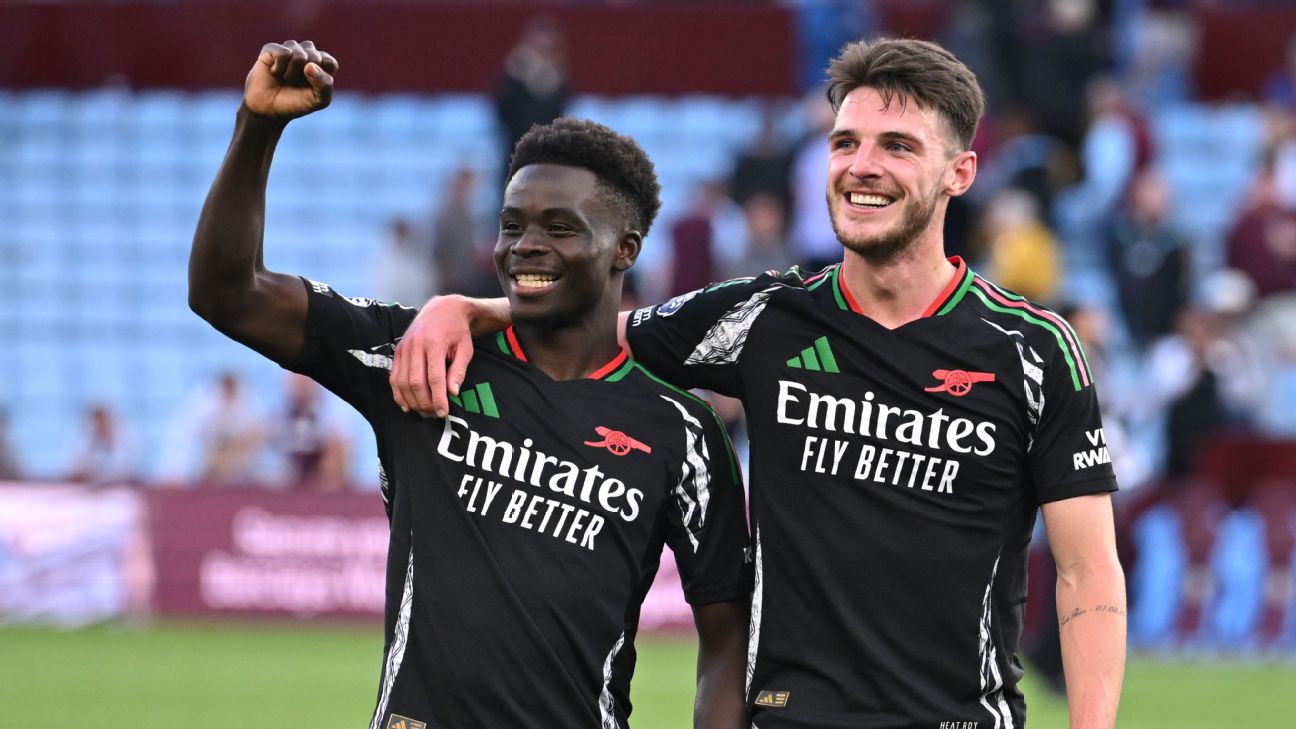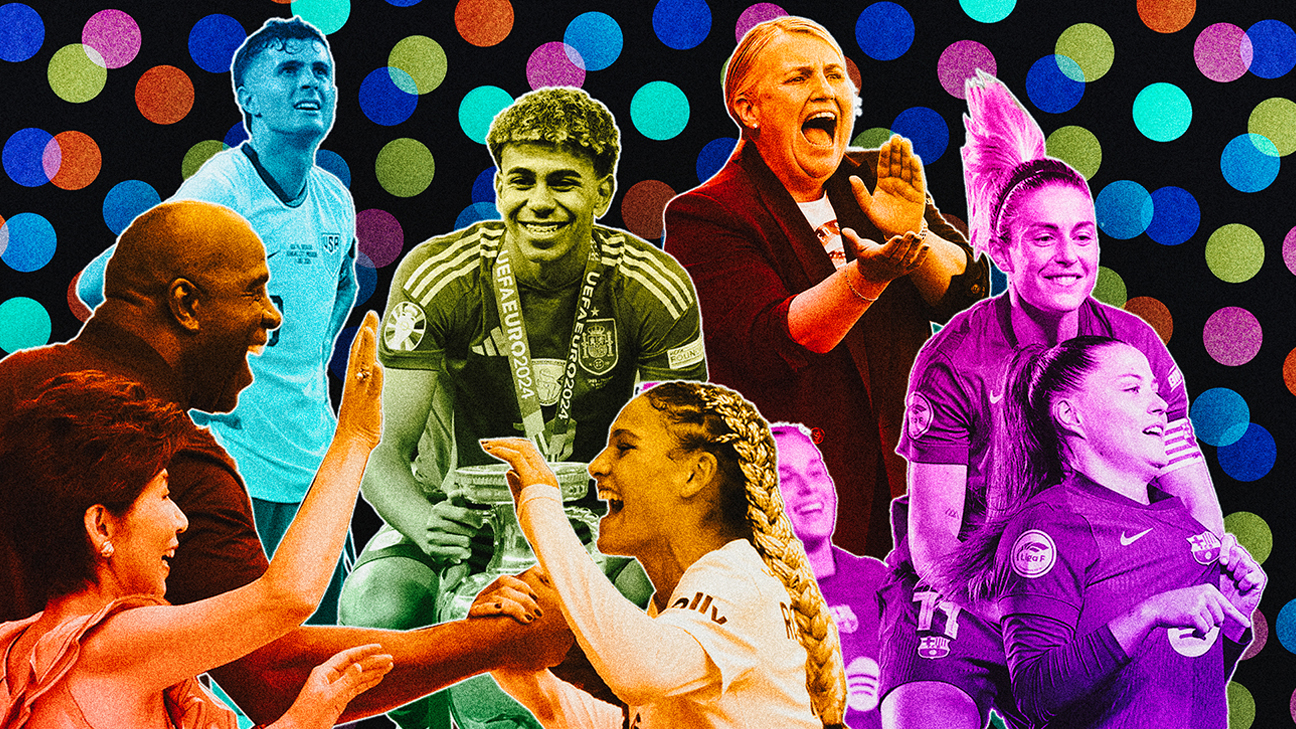Ever wondered which members of a soccer team are the most important? After bringing you the Premier League’s depth chart for all 20 squads last month, we have turned our attention to the traditional Big Six clubs in England to assess which players are their leading lights.
Based on a simple combination of ability and tactical importance, those whose role is integral to their team will feature higher in the ranking, while those who play less of a fundamental part will filter toward the bottom. Ultimately, the evaluation is weighted more heavily toward ability than tactical importance, but both have been taken into account. To begin, here are a few notes about the methodology.
– Stream on ESPN+: LaLiga, Bundesliga, more (U.S.)
Why 15? Well, with 11 first-team players starting any given match, this should allow for those squad positions that aren’t 100% cemented. Any long-term injury absences will be noted separately and not considered for the ranking.
How can you rate the players? WhoScored has an algorithm that gives an overall number out of 10, but it lends itself more to on-ball actions, while this will be more subjective. “Minutes Played” is obviously a key component of how important a player is to their manager, but slight injury issues can complicate that: we will only use it as a guide.
Are stats involved? Certainly. We’ll look within the context of their position and, for example, will make a case why a striker (Goals, Assists, Key Passes, etc) will rank higher than a teammate.
How hard is it? Some of the decisions to be made are glaringly obvious, but others not so much. Comparing players across different position groups is a difficult task. Within the context of a squad, though, it’s possible to get a feel for who is the most integral, even at this early stage of the season, in order to form the ranking.
I disagree wholeheartedly with your decision to put X below Y. Will you change it? Of course people will disagree and a lot of this is subjective, but it’s only a bit of fun. And look out for another ranking around March when we can see how things have developed.
Enough of that; on with the rankings.
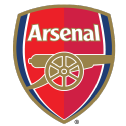
ARSENAL
Mikel Arteta’s squad quality has increased significantly over the past couple of seasons, lifting them from top-four hopefuls to title challengers and making this exercise infinitely more difficult.
MISSED THE CUT: Striker Eddie Nketiah is a handy homegrown option for Arteta to call upon up front in a pinch, but is behind Gabriel Jesus, while summer signing Jurriën Timber’s cruel injury has prevented the versatile defender making the kind of impact needed to crack the list. Jorginho has also put in some strong performances in big games since joining, but isn’t first choice.
15. Leandro Trossard, FW
Capable of filling in for any of the front three — playing left, right or even as the centre-forward — Trossard is seemingly happy to dip in and out of the first XI, playing wherever and whenever Arteta calls upon him. That makes him the kind of squad player top managers and clubs dream of.
14. Fábio Vieira, MID
By modern standards, Vieira hasn’t played that much football for a 23-year-old, as he was never a key starter for FC Porto before arriving at Arsenal in 2022. However, he’s steadily improving and adding elements to his game, forcing Arteta to consider him for an ever-expanding role.
13. Kai Havertz, MID
There is a lot of hope and expectation that the £65 million summer arrival will finally fulfil his potential at Arsenal, but the early signs are that may be a slower process than initially believed. While he played as a striker at Chelsea, Arteta seems to view him as a central midfielder and the transition means he is not yet a key figure for the Gunners. He did recently get his first goal against Bournemouth, though, and should go from strength to strength.
12. Thomas Partey, MID
Partey was a player Arsenal could not do without last season, and would have been much higher on this list back then, but this term things are slightly different. He can play a useful role either in midfield or at right-back, but the club no longer rely on him thanks to the signing of Declan Rice for £100m.
11. Aaron Ramsdale, GK
Again, had this ranking been constructed at the end of last season, Ramsdale would have found himself much higher. His booming personality, penchant for a big save and laser-like distribution were a big factor in Arsenal’s rise to second in the table. However, he appears to have lost his spot in the XI for now, although his compatibility with Arteta’s playing style means he remains an important asset.
10. David Raya, GK
Arsenal might well be the only club in this ranking where two goalkeepers feature in the top 15 but, as we all know by now, Arteta is doing things differently. Brentford loanee Raya ranks above Ramsdale right now as he’s the No. 1 and has already shown great distribution, willingness to claim crosses and sweeping ability.
9. Gabriel Magalhães, DEF
Gabriel’s been a fixture in this Arsenal team for the vast majority of his time at the club, even completing all 38 Premier League starts in 2022-23. But at the beginning of this campaign the Gunners showed a willingness and ability to win without him, meaning he drops to a ranking some might find surprisingly low.
8. Ben White, DEF
White has emerged as one of the Premier League’s best right-backs, which is something few saw coming given his background as a centre-back (and at times holding midfielder.) His connection with Bukayo Saka elevates his importance, as the pair’s ability to combine makes Arsenal’s right side a force to be reckoned with.
7. Gabriel Martinelli, FW
We’re firmly into key player territory now. Martinelli’s emergence on the left has brought balance to Arsenal’s attack, and there’s simply no substitute in the squad for his searing pace and directness. The Brazilian’s willingness to drive at players, then either cross at the byline or hit low shots toward the far corner, resulted in an incredible 15 goals and five assists in the Premier League last season.
6. Gabriel Jesus, ST
Jesus is Arsenal’s best striker, but to measure his impact you have to go beyond the goals. Eleven in the league last season was a decent return, but it’s only when you consider the amount of space and opportunity he affords others — courtesy of clever movements and one-touch passing — that you get the full picture.
Among players who played at least 2,000 minutes in the Premier League last season, he ranked third for xAG (expected goals + expected assists) per 90, behind only Liverpool’s Mohamed Salah and Man City’s Erling Haaland. With that in mind, you could build a case for him being ranked higher as Arsenal clearly look much better with him in the team, but the flip-side of that argument is that even without him, they can largely get the job done. (It just won’t look as pretty.)
5. Declan Rice, MID
You’d expect a player of Rice’s quality, and one who cost such an incredible sum of money, to walk straight into the top three — but things aren’t that simple. The England international has had a big impact so far, but this is a well-oiled Arsenal machine and Partey is capable of stepping into the base of midfield to replace him. Rice is brilliant and will go on to become a huge factor for the Gunners in the years to come, but right now there are at least four more pivotal players than him in this squad.
4. William Saliba, DEF
Often, the easiest way to judge a player’s value to a club is what happens when they’re not there. A back injury forced Saliba to miss the final 11 games of last season … and their title challenge disappeared as well.
His recovery defending, physicality and ability to sweep the channels is already at an elite level, despite being just 22 years of age, and his skills were evident in the quietly magnificent way he dealt with Haaland on Sunday. The victory made it 27 wins from 35 Premier League games for Saliba, an incredible 77% win rate, which shows how crucial he is.
3. Oleksandr Zinchenko, DEF
Tactical importance is a key factor for this ranking, alongside playing ability, and Zinchenko is the poster boy for this. While you could argue he is not a better outright player than Rice or Saliba, it’s obvious he is crucial to the dynamic of this team.
Often cutting inside from his left-back spot to dictate play as a midfielder, when he’s injured (which is frustratingly often) the quality of Arsenal’s buildup play takes a notable dip. Arteta’s in-game restructuring suffer as well, making life for one of the most ball-dominant teams in the league much more difficult.
2. Martin Ødegaard, MID
The captain and the best central midfielder to wear the Arsenal shirt since Cesc Fàbregas, Ødegaard has found his home at the Emirates after initially bursting onto the scene as a 15-year-old when signed by Real Madrid. Now 23, he is a magnificent passer, capable of unlocking any defence in the world, and steadily chips in with goals — an impressive 15 from 37 league games last season. He’s also developed something of a clutch gene, scoring or making a key pass at important moments on the biggest stages. That’s captain behaviour, no doubt about it.
1. Bukayo Saka, FW
Who else at No. 1 than the “Starboy” himself? Saka is the most important player on this team, and Arteta knows it, as Saka started their past 87 Premier League games consecutively — a club record dating back to May 2021 — before missing the Man City win through injury. The England winger hit double figures for league goals (11 and 14) in each of the past two seasons and has become one of the best forwards in the country, let alone the club.
When the ball reaches him on the right flank and he steps inside, fans are just waiting for something special to happen. That’s not something you can say about too many in the game.
James Olley explains why the short-term pressure on Chelsea to get results will all fall on Mauricio Pochettino.
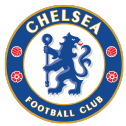
CHELSEA
Chelsea have endured a bumpy 2023 despite spending more than £1 billion in the past three transfer windows. They’ve accumulated a massive squad that manager Mauricio Pochettino is sifting through on a weekly basis, trying to find the right combinations. He sees the players up close and he’s struggling — so imagine how we felt constructing this list.
MISSED THE CUT: If injury hadn’t curtailed Carney Chukwuemeka’s season so early, the 20-year-old midfielder might well have made the final 15. He joins a long list of excellent players on the treatment table, including forward Christopher Nkunku and centre-back Benoit Badiashile, who would be somewhere on this list if fit and playing. Next year’s version might see bigger roles for Lesley Ugochukwu and Romeo Lavia if they impress.
15. Armando Broja, ST
Nicolas Jackson is the first-choice striker, but he’s yet to find the sort of goal-scoring consistency a top club asks for so other options could prove important. After suffering a bad injury last season, Broja should play a role this time and is already off the mark.
14. Malo Gusto, DEF
Reece James’ unfortunate injury record means Gusto stands to play plenty of games for Chelsea. He’s already had to step in for an extended spell and largely done well, providing energy and attacking intent down the flank. He’s more important than your average backup right-back.
13. Axel Disasi, DEF
Signing Disasi was a direct response to losing centre-back Wesley Fofana to another long-term injury. Considering the France international had just nine days to settle at his new club ahead of the Premier League opener (which he scored in), he’s done pretty well. His style is uncompromising and effective at both ends of the pitch.
12. Mykhailo Mudryk, FW
Mudryk’s first half-season after his £70m move from Shakhtar was a big disappointment, but over the past three weeks he’s hinted that things could turn around. Not only has he scored his first Premier League goal, but every time he gets the ball, it feels like something is about to happen.
11. Robert Sánchez, GK
Chelsea opted for a full reset in the goalkeeping department this summer, moving on from Édouard Mendy and Kepa Arrizabalaga, and signing Sánchez as No. 1. Some might think he’s a stopgap until one of the über-talented young keepers in the youth ranks emerges in full, but the Spain international has done well so far.
10. Nicolas Jackson, FW
Jackson is clearly the club’s pick to lead the line this season, but the erratic nature of his finishing holds him back. He’s fairly new to top-level senior football so growing pains are to be expected, but the fact he’s underperforming his xG by 2.1 in the Premier League this season (the worst rating in the division) is not what such a goal-shy team needs. Jackson still offers plenty to the team, such as good runs behind the defence and neat one-touch link play, but his shooting must improve.
9. Cole Palmer, MID
When Manchester City fans lament the loss of a player, you know they’re a good one. Palmer’s late £35m move surprised many — perhaps even himself — but he’s intent on playing regular football, and so far the signs are good. A tough player to gauge, given he has a total 730 Premier League minutes to his name (about a third of which have come for Chelsea), but based on early evidence it’s clear he oozes quality.
8. Conor Gallagher, MID
It’s remarkable how quickly things can change in football. At one point during the summer Gallagher looked set to leave Chelsea, yet October saw him lead the team out as captain in the derby against Fulham. His work rate and determination are unmatched, setting a tone in midfield that others aspire to match. And he’s a handy goal scorer too.
7. Levi Colwill, DEF
One of Pochettino’s first moves as manager was to integrate Colwill after his return from loan at Brighton. Using him at both centre-back and left-back, the decision has been met with joy and relief from the fans. Despite playing a position renowned for its reliance on experience, the 20-year-old is shining with his great defensive instincts and wonderful passing ability. It may surprise some to see him this high in the ranking already, but his quality cannot be called into question and the number of injuries Chelsea have in defence makes him key.
6. Moisés Caideco, MID
N’Golo Kanté’s summer exit left Chelsea severely lacking an energetic midfield presence, so they went all-out to sign Caicedo for an initial £100m from Brighton. It’s been a tricky start, hampered by injury and international call-ups, but against Fulham he showed flashes of just how crucial he will be to this team. Caicedo was one of the best players in the league last season, totalling the second-most combined tackles and interceptions (156) and will surely look the part for the Blues soon.
5. Ben Chilwell, DEF
Chilwell has grown into one of the Premier League’s best left-backs. Appointing him vice-captain certainly suggests that they want to keep him for a long time, though their only issue would be the injuries that constantly disrupt his rhythm.
4. Thiago Silva, DEF
Every squad needs a balance of youth and experience. Silva is 39 now, while the next-oldest defender in the squad is Chilwell at 26, so the Brazilian’s leadership in the dressing room and calm head on the pitch is key. He’s been a pillar of excellence since signing on a free transfer from Paris Saint-Germain in 2020, the sort of player who makes you appreciate the fine arts of defending.
3. Raheem Sterling, FW
Sterling has looked much more like his old self in 2023-24 so far. The England winger’s dribbling is a constant threat and while his production (three goals in eight Premier League appearances) isn’t top tier, the underlying numbers paint a different picture: He’s second in the league for carries into the penalty area (28) and progressive carries (45). At 28, Sterling is one of the oldest players in this fledgling squad and is a key performer.
2. Enzo Fernández, MID
In smashing the British transfer record to sign Fernández from Benfica for £106.8m in January — after he won the 2022 World Cup with Argentina — Chelsea will hope the midfielder can be a key building block for the next decade. He is already one of the best midfielders in the Premier League, needing no time to settle and show his various qualities, which include ball progression from deep, long-range passing, set piece wizardry and an infectious energy.
1. Reece James, DEF
Chelsea made the right choice to hand the captain’s armband to one of their best players, one who graduated through the youth system and is able to forge a connection with the fans in the process. In the modern game that connection can be hard to find, but James loves Chelsea — and the fans love him. The only issue is his injury record, which is already looking pretty alarming, and the team miss his presence, crossing ability and quality when he’s not fit.
Alejandro Moreno debates Trent Alexander-Arnold’s No. 4 position on Sam Tighe’s Liverpool MVP list.
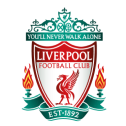
LIVERPOOL
Liverpool’s summer revolution in midfield — losing the likes of Fabinho, Jordan Henderson, James Milner and Naby Keita — has sparked a new dawn under manager Jürgen Klopp. But will it reestablish them as potential title contenders or will the team take time to jell?
MISSED THE CUT: Thiago Alcantara has fallen down the pecking order and is injured a lot now anyway, but Kostas Tsimikas would probably be No. 16. Harvey Elliott, Wataru Endo and Ryan Gravenberch are all on the outskirts of the midfield conversation and trying to find a way in.
15. Joe Gomez, DEF
It’s been heartwarming to see Gomez rebound from a difficult period after a spell on the sideline through injury. His ability to play centre-back and right-back — or a role straddling the two — is now more important than ever given right-back Trent Alexander-Arnold has begun drifting into central areas to dictate the play.
14. Joël Matip, DEF
Matip has proved to be one of the most astute signings of the modern Premier League era. His mix of defensive nous and dribbles from deep have been serenaded at Anfield ever since he arrived on a free transfer in 2016. Injuries have slowed him a little lately and shifted him into a squad role, but he remains a key member.
13. Cody Gakpo, FW
Gakpo’s instantaneous adaptation from a hard-running wide forward at PSV Eindhoven to a more concerted linkup player at Liverpool points to his natural intelligence. Klopp can use the Netherlands international in various ways, which is ideal for a squad role at a top club that plays a lot of games.
12. Diogo Jota, FW
Like Gakpo, Jota is versatile across the forward line too. While he has dipped in and out of the side since joining — injuries have played a part in that — he will step up whenever and wherever necessary. His ability to score in a wide range of different ways is extremely useful.
11. Darwin Núñez, FW
There were big expectations of Darwin following a £64m move from Benfica last summer, but things haven’t exactly gone smoothly. Still, it really does feel like he’s edging closer to that first-choice No. 9 spot, with Liverpool’s tactical shift back toward old-school chaos really suiting his playing style.
10. Curtis Jones, MID
Jones has emerged as a valuable connective midfielder for Liverpool, with his ability to retain possession under pressure and do lots of little things well really lifting the overall level of the team. He doesn’t conform to many labels — he’s not a destroyer, renowned goal scorer, or a box-to-box engine — he’s just a bit of everything, rolled up into one.
9. Ibrahima Konaté, DEF
Konaté feels like a tactically important player to Liverpool. His total number of minutes doesn’t suggest that’s the case, but the big asterisk is that he has succumbed to frequent injuries since joining the club. The Frenchman is a perfect modern centre-back, but is also able to step in to the interchanging CB/RB role required to balance out Alexander-Arnold’s inverting movements. Liverpool play a lot better when Konaté is there and Klopp likely wishes that was the case more often.
8. Alexis Mac Allister, MID
Heralded as a bargain £35m arrival in the summer, it’s been a case of “so far, so good.” The Argentina World Cup winner consistently plays in Liverpool’s new-look midfield, aided by the fact he can operate as a No. 6, No. 8, or No. 10. He brings great energy and technical ability to the table.
7. Andy Robertson, DEF
A consistent force on the left for Liverpool with his natural intensity and competitiveness, the fact the club rarely use a capable backup like Tsimikas is a sign of how important the Scotland international is to the team. Creatively he has dropped off over the last couple of seasons — with his streak of double-digit Premier League assist seasons ending at three back in 2022 — but that has come through his role being tweaked to be a bit more defensive.
6. Luís Díaz, FW
There’s a lot of competition for places in Liverpool’s forward line, especially on the left wing now Sadio Mané has departed. Of all the candidates, Díaz has consistently stepped up and grasped the role. His electric dribbling, consistent goal threat and committed off-the-ball work has won Klopp over.
5. Virgil van Dijk, DEF
A couple of years ago, Van Dijk would have been in the mix for the No. 1 spot, such was the magnitude of his defensive performances. Sadly, since suffering an ACL injury in the Merseyside derby in 2020, the captain been a shade off that imperious level. That said, the 32-year-old is still a top-class centre-back whose aerial dominance and passing range give Liverpool a solid foundation.
4. Trent Alexander-Arnold, DEF
Alexander-Arnold has always been key for Liverpool, when operating as a creative force from right-back, but since Klopp tweaked the system to bring him into midfield in possession, he’s become even more so. Indeed, the England international has stepped up a level in central areas, where his passing range and selection of crosses can have more of an impact. The move has also helped protect him defensively — a part of his game which has been fairly questioned in 2023.
3. Dominik Szoboszlai, MID
It’s taken no time at all for the £62m summer arrival to show his talent at Liverpool. Ranking him third may seem like a big call, but Szoboszlai already stands out as one of the best and most important players at the club. No one — not even Salah — can strike a ball like him, and no one can combine that with an ability to do two players’ worth of running in a game. The ground he covers and his off-the-ball intensity is jaw-dropping at times.
2. Alisson Becker, GK
Alisson is a fantastic example of how impactful a goalkeeper can be. For all of Liverpool’s excellence over the last five years, they’ve had to turn to the Brazilian plenty of times to save them. Statistically, Alisson was the best shot-stopper in the Premier League last season, conceding 10.1 fewer goals than expected based on the shots he faced. His ball-playing skills and ability to sweep up behind the defence separates him from his peers.
Measuring a goalkeeper’s ability against outfielders is never easy as they’re incredibly different positions and skillsets, but there’s no doubting Alisson is world class.
1. Mohamed Salah, FW
There’s no shock reveal here. Whether Salah is playing the part of chief goal scorer or prime creator, the Egypt international is a world-class forward who Klopp rightly turns to repeatedly to make the difference. His speed and direct running epitomise Liverpool’s modern style and mark him out as one of the most dangerous forwards in the Premier League. Even if he’s not having a standout game, he’ll pop up with a moment of quality that can shift momentum in an instant — that’s the sign of a truly great footballer.
Julien Laurens sounds off on Manchester United after their Champions League defeat to Galatasaray.
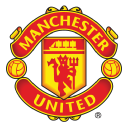
MANCHESTER UNITED
Manchester United have lurched from crisis to crisis so far this season, making a lot of these players hard to measure — especially the new ones. Though some calls, like who to drop entirely, were pretty easy.
MISSED THE CUT: Midfielder Scott McTominay, newly crowned goal machine, is slightly unfortunate to miss out on the top 15, as is right-back Aaron Wan-Bissaka, who is seemingly no longer first choice but still chips in with his fair share of minutes. If Jadon Sancho ever apologises to manager Erik ten Hag, then he might make an appearance, but for now he’s out. And there’s no place for Harry Maguire, who until a few months ago was the captain of the team.
15. Alejandro Garnacho, FW
We’re still waiting for Garnacho to make the leap from electric super-sub to reliable starter. Until that happens, let’s just enjoy the fact he can change a game in an instant, giving Ten Hag a powerful option off the bench.
14. Victor Lindelöf, DEF
It’s important that Man United have a reliable backup centre-back or two, as the first-choice pairing of Raphaël Varane and Lisandro Martínez rarely stays together due to injury or suspension. That’s where Lindelöf steps in; he fills the gaps as and when they appear.
13. Christian Eriksen, MID
An incredibly smart footballer, Eriksen’s impact on the United midfield has waned over the course of 2023, but he still plays an important role in steadying the ship when needed. The Denmark international suffered a cardiac arrest at the Euros in 2021, so it’s remarkable that he’s back playing at the highest level at all. United rely on him to step in when gaps are there to exploit or they need someone to control the tempo.
12. Sofyan Amrabat, MID
It took three months to get him (on loan from Fiorentina) and he mostly has been used out of position so far, but soon Man United fans will be able to appreciate Amrabat’s talents properly. The multifaceted midfielder lit up the World Cup with Morocco due to his energy and combative nature, but is a different style of player for his club teams. Regardless, he can stabilise the centre of the United midfield and will surely sign permanently in the summer.
11. Antony, FW
The Brazil winger can frustrate at times, with critics suggesting his “cut in from the right” move is too predictable, but he’s still effective regardless and important to United’s attacking setup. Full of energy and tricks, Antony is willing to shoot and has the vision to spot his teammates in the box. Back after a leave of absence last month, his skill set is hard to replace.
10. Diogo Dalot, DEF
It has taken some time for Dalot to achieve prominent status at Man United, but after years of working hard to iron out the defects in his game, he’s now one of the better all-round full-backs in the Premier League and first choice on the right for Ten Hag. Strong in possession, with good crossing ability and a versatility that allows him to play on either flank, he is extremely valuable to the squad.
9. André Onana, GK
Onana has had an inauspicious start to life at Old Trafford since joining for £47.2m from Internazionale this summer. The opening weekend of the Premier League set the tone for what was to come as the Cameroon international somehow escaped punishment for a foul late on against Wolves and has looked unsteady ever since. In particular, his shot stopping has come under intense scrutiny, but it was one of his great strengths in the Champions League last season — where he saved 7.6 more goals than expected on the way to eight clean sheets.
Tactically, his ball-playing style is very important to how Ten Hag wants United to set up, but he might need more time to adjust.
8. Rasmus Højlund, FW
A £64m summer arrival, Højlund may be young and unpolished, but his combative and energetic style can make a splash in any team — as long as you feed him the ball and let him go to work. The 20-year-old has yet to score in the Premier League but has three in the Champions League, and his ability to provide a focal point to the attack makes him valuable regardless of his end product. With nothing in reserve — except an injury-prone Martial — Højlund has immediately become vital.
7. Mason Mount, MID
Due to a combination of injury and general dysfunction, Mount’s United career is yet to really take off. At his best he’s a fine footballer, combining on-the-ball movement and impressive goal production with some of the smartest pressing in the game. But even though he moved from Chelsea for £55m this summer, he’s still working his way back toward that level.
6. Raphaël Varane, DEF
Varane’s style of defending is impossible to measure by defensive-action statistics. He prefers to back off his opponents and delay attacks, pushing them into corners via shepherding, rather than lunging in and hunting the ball (like, say, Martínez does). But while he’s still a master of the art, it’s clear the 30-year-old has dropped a level since his heyday, resulting in a potentially surprising sixth place in this ranking.
5. Casemiro, MID
The Casemiro ride is never smooth, and bumps along the way are to be expected (and by bumps, we mean red cards), but he largely has made exactly the sort of impact you’d expect from a five-time Champions League winner. It’s been a tough start to the season, but we’re not writing off his quality and pedigree just yet. If anything, the reason he’s not ranked in the top three is more to do with the fact United have lessened their reliance on him by signing Amrabat.
4. Lisandro Martínez, DEF
Age is just a number? How about height is just a number! Much was made of the centre-back’s diminutive 5-foot-9 stature when he arrived from Ajax last year, but he has put those concerns to bed following some impressive, tone-setting performances. Martinez walks the disciplinary tightrope a little too often for comfort, but you accept that risk as his passing ability from the back elevates this team significantly. No other centre-back in the United squad can slice teams open like him, and his injury absence will be felt.
3. Luke Shaw, DEF
It’s incredible just how much of Man United’s play goes through Shaw. The left-back has grown to become an integral component of this team, not just as an overlapping presence on the flank but as someone who is central to the passing buildup, too. It is no surprise that United have struggled in his absence, as there’s no player who can replicate the variety of things he does while also performing well in a defensive capacity.
2. Marcus Rashford, FW
Rashford scored 17 Premier League goals last season as he spearheaded Man United’s move into the top four — a much-needed leap in production from a player of undoubted potential. But this season hasn’t quite gone to plan so far, and one goal from 31 shots in the Premier League is the opposite of prolific. There’s still no substitute for his razor-sharp instincts and extreme speed, but United will hope his quality will shine through again soon.
1. Bruno Fernandes, MID
This decision is clear as day, and the club recognised Fernandes’ importance by making him captain over the summer. Since the moment he arrived from Sporting CP in 2020 he has been an X factor in attack, continually conjuring moments of brilliance and propelling the Red Devils forward. From long shots to scything passes to perfect penalties, he’s got it all. His 46 goals and 34 assists from central midfield in the Premier League is a remarkable return.
Alejandro Moreno explains why he would pick Erling Haaland over Rodri as Man City’s MVP.
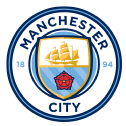
MANCHESTER CITY
The reigning European champions and treble winners have an embarrassment of riches across every position. But they also have one of the smallest squads in the Premier League. All it takes is a few injuries and you start to realise how important certain players are.
MISSED THE CUT: Winger Jérémy Doku has started well considering he’s learning how to do things under Pep Guardiola and is effectively No. 16 in this list. Another summer arrival, Matheus Nunes, has some work to do before he’s depended upon in this team, while Kalvin Phillips is clearly not where he would want to be. In a year’s time, youngsters Rico Lewis and Oscar Bobb might find themselves a much more important part of the squad.
15. Joško Gvardiol, DEF
Guardiola has doubled down on his use of four centre-backs in a game, meaning a specific skill set is required to fulfill the outside roles. The 21-year-old Gvardiol fits the bill perfectly, from both an ability and tactical point of view. He has immense potential and will grow into a more prominent figure.
14. Nathan Aké, DEF
After a slow start to life at City, in which he played fewer than half of the games over the first two seasons, Ake blossomed and was a key component of the club’s 2023 treble win. Interestingly, he’s now back in a battle for a starting spot following the arrival of Gvardiol.
13. Mateo Kovačić, DEF
Following the exit of Ilkay Gündogan in the summer, City moved fast to bring in the exceptional and experienced Kovačić. His mazy, ball-carrying style from deep in midfield epitomises the slightly new direction City have decided to pursue this season.
12. Manuel Akanji, DEF
Akanji arrived at City in a shock move from Borussia Dortmund last year with a reputation for making the occasional big error. In time, though, it was proved that was far more to do with him playing for Dortmund than anything else. He has been very dependable for City across the back line and has even alleviated injuries in midfield at times.
11. Jack Grealish, FW
After a slow first campaign in Manchester, the £100m man exploded into a key player for Guardiola in his second season, starting almost every critical game. His connection with Haaland up front makes him an easy choice to turn to when it matters the most — although he is fighting fresh competition from Doku this term.
10. Phil Foden, FW
Foden has played the waiting game under Guardiola, biding his time for years until his turn arrived. That time is now, and he’s making the most of it by combining his typically incisive attacking play with a new decisive edge. The 23-year-old is still not an automatic starter — only a handful are at City (see further up the list) — but he’s tough to ignore.
9. Kyle Walker, DEF
Walker has offered things that few others can over the past six years at City, namely: a guiding voice during tough times, a burning desire to improve at all costs and, of course, searing, unrivalled recovery pace in defence. He has survived multiple revolutions under Guardiola while dealing with the challenge of an ever-changing role. Still a key presence in the team, even with the emergence of Lewis, Walker has a serious level of quality that is somehow underrated by many.
8. Julián Álvarez, FW
There’s little left to say about Álvarez’s remarkable 2023. He has continued to improve with every passing month since winning the World Cup with Argentina and, in the early parts of this season, has carried Man City’s attack in the injury-enforced absence of Kevin De Bruyne. Most City fans would feel comfortable with him playing as a centre-forward should Haaland get injured — a simple, yet incredibly complimentary statement of his current level.
7. Bernardo Silva, MID
You would be forgiven for losing count of the various different roles and responsibilities Silva has fulfilled for City, from winger, to deep-lying midfielder, to false No. 9, to wing-back, and everything in between. He’s a player of immense technical talent who can carry out even the most detailed tactical instructions while still shining, scoring and smiling.
6. Éderson, GK
To play in goal for Guardiola, you must be able to use your feet like an outfielder. Ederson is among the best in this area and has been a roaring success ever since signing from Benfica in 2017. His ability to recycle possession cleanly, or launch a long pass to create a chance, gives City an edge many others lack. And he’s great at saving a few shots along the way, too.
5. Rúben Dias, DEF
The heart and soul of the City defence. A constant presence in the centre, Dias is a vitally important building block in this team. If he’s fit, he plays — always — which is a nod to the leadership qualities and robust, traditional defending style he bring to the table. Even in a team as technically talented as City’s, you need grit and brawn to complement the magic.
4. John Stones, DEF/MID
There is never one single reason for a team’s fortunes turning, but if you had to boil City’s sudden uptick in quality at the back end of last season, it’s probably down to Stones. The hybrid centre-back/defensive midfielder role he played to perfection elevated the team to an unbeatable state. No one else in the squad can fulfill it (Akanji has tried, with mixed results) and it provided a tactical X factor during the title run-in that no one could figure out. Off the back of this transformation, Stones is now finally being recognised as one of the best players in the world.
3. Kevin De Bruyne, MID
City have coped remarkably well without the injured De Bruyne this season (and in the Champions League final), but he remains one of the best players at the club and is in the top bracket of his position group across world football too. When he’s fit again, he’ll make them even better.
2. Erling Haaland, ST
Sometimes analysis must be kept simple: Goals win games, and Haaland scores truckloads of them. Eight in eight Premier League games so far this season, 36 in 33 last season. The 22-year-old has netted seven hat tricks since joining the club in the summer of 2022 — which, for context, is verging on Cristiano Ronaldo/Lionel Messi territory in terms of returns. A player like Haaland can take your team performance into the stratosphere if everything clicks, but can also paper over some cracks if it doesn’t (not that that happens too often to City.)
1. Rodri, MID
It might sound like a bold take, but Rodri appears to be Man City’s true MVP — not Haaland and not KDB. The statistics certainly paint that picture. Since the start of last season, City have lost four of the past 60 games Rodri has played in, winning 46 and drawing 10. In that time frame without him, they’ve lost five in 11.
He is perhaps the best central midfielder in world football, blending together great passing, superb positional nous, strong defensive traits, physicality, height and, of course, a surprisingly frequent contribution on the scoresheet. Without him, City visibly struggle. The hole he leaves is bigger than if Haaland is absent, which is partially because of Álvarez’s emergence and also because the system can still easily create and score chances without a No. 9 striker. No one can replace Rodri’s impact on the team.
Steve Nicol explains the weaknesses in Tottenham that will prevent them from challenging for the Premier League title.

TOTTENHAM
Spurs have enjoyed a brilliant start to the season despite the loss of star striker Harry Kane to Bayern Munich over the summer. New manager Ange Postecoglou has breathed fresh life into the club and radically overhauled the team, meaning our scope to judge the tactical element of this discussion is almost solely based on this season so far.
MISSED THE CUT: Winger Manor Solomon was doing a good job of working his way into the team until a knee injury stopped his progress. Defenders Emerson Royal and Eric Dier may have fallen out of favour but are on standby for this list, too. Experienced winger Ivan Perisic would be on it but is likely to be out for the rest of the season due to injury.
15. Oliver Skipp, MID
Skipp is used mainly as a relief mechanism in midfield late in games, stepping in for the final stretch and adding fresh legs. It’s hardly the most expansive role, but he carries it out well.
14. Ben Davies, DEF
Davies looks set to be a squad option for Spurs this season. Postecoglou will be delighted he can call upon such a steady presence if required, and the fact he’s left-footed makes him a natural backup to either Micky van de Ven or Destiny Udogie.
13. Pierre-Emile Højberg, MID
Højberg has slipped down the pecking order but has shown in consecutive matches that he can play a pivotal role off the bench. He was linked with a move to Atletico Madrid in the summer and that might well be revived in January but, for now, he’s chipping in where and when required.
12. Brennan Johnson, FW
The fact Postecoglou handed the £45m new arrival his first start for Spurs in the north London derby speaks volumes of his faith in him. Sadly any early momentum has been curtailed by an injury, but the signs are that the 22-year-old’s importance to the team will grow as the campaign develops.
11. Richarlison, FW
Richarlison always offers a base level of commitment, energy and battling qualities to his team, which are all elements Postecoglou appreciates. The problem comes in front of goal, where he’s just not doing the business: One goal from 18 shots doesn’t read well, nor does the fact he’s underperforming his xG by 1.5 — the third-worst underperformance in the league. Until this improves, he’s far from indispensable.
10. Pape Matar Sarr, MID
Sarr had to wait for a run in the first XI but has taken his opportunity with both hands. His game still needs plenty of refinement — particularly on shots from distance — but he has the energy, endeavour and intelligence to rotate in and out of different buildup positions.
9. Dejan Kulusevski, FW
Kulusevski is one of the best ball-carrying wingers in the Premier League, but what really sets him apart from the rest is his decision-making in the final third: It’s very rare he’s chosen the wrong option. You might be surprised to see him ranked so low (honestly, him ending up here shocked me too) but there’s logic to it: Almost every player above him is tactically pivotal with no backups of a similar level, whereas Kulusevski plays in Spurs’ deepest position group.
8. Destiny Udogie, DEF
Udogie is some player, that much is already clear. His integration from Serie A side Udinese has been incredibly smooth and a tip of the hat is owed to Postecoglou there. The manager has harnessed the Italy international’s incredible ball-carrying skills from deep and made them a key tenet of Spurs’ buildup play. No other defender in the squad can offer this.
7. Pedro Porro, DEF
Porro’s first half-season at Spurs was mixed, but so far this term he has been consistently excellent. The Spaniard is superb on the ball, great in tight spots and makes smart decisions in every area of the pitch. He was once a part of Manchester City’s academy setup and, while his career has taken a few twists since, nowadays he looks like a player Guardiola would turn to without hesitation.
6. Guglielmo Vicario, GK
Kane’s summer exit was a sign of a new era dawning at Spurs, but a switch of No. 1 goalkeeper felt almost as significant. With veteran Hugo Lloris axed from the squad, Postecoglou asked for a goalkeeper who was more adept with the ball at his feet, and he certainly got one. Vicario already looks a key piece of the puzzle and none of Tottenham’s reserve options can do what he does.
5. Micky van de Ven, DEF
It didn’t take long for Spurs fans to get “Jan Vertonghen vibes” from Van de Ven, whose commanding presence at the back is already a big part of this team. He has a good left foot, which can provide balance to the buildup play, and his speed and positional sense are excellent in helping him to make recovery tackles.
4. Cristian Romero, DEF
An unfortunate own goal in the north London derby aside, Romero looks like a changed man this season. He still has the natural aggression which defines his style, but he’s channelling it positively and barely committing any fouls at all — indeed, 13 Spurs players were booked before he was this season. There might be some who would rank Van de Ven above Romero here after the Dutchman’s brilliant start, but Romero is still an important anchor in this team and, of course, a World Cup winner. We’ll give that pedigree the nod for now.
3. Yves Bissouma, MID
From a bit-part player to key cog, it’s been quite the turnaround for Bissouma at Spurs. Postecoglou has decided to run his entire system through the midfielder, and the rewards have been (mostly) bountiful, with the Mali international flashing shades of an old Tottenham favourite, Moussa Dembélé, at times. With Rodrigo Bentancur recovering from a long-term injury, Bissouma appears to be the only player in the squad who can play this incredibly difficult role at the base of midfield.
2. Son Heung-Min, FW
The surplus of attackers that makes Richarlison, Johnson and even Kulusevski somewhat interchangeable doesn’t hold Son back because, well, he’s Son. A stalwart and now captain of the club, the South Korea international has started the 2023-24 season brilliantly, earning a Premier League Player of the Month nomination for September after scoring an incredible six goals. Be it from the left or up top in place of Kane, he has looked a consistent threat in terms of stretching defences and finding the back of the net.
1. James Maddison, MID
Maddison has been on fire in terms of chance creation and final-third effectiveness so far this season. His five assists lead the league and that’s no fluke; in fact, he should probably have more. His 65 shot-creating actions is miles clear of the next contender, Manchester United’s Bruno Fernandes, who is on 40.
The fact Maddison has been so effective so quickly is a big part of the reason Spurs have flown up the table. They’re not dwelling on the loss of Kane, they’re pushing on without him, and that’s because the England midfielder has been sensational.
